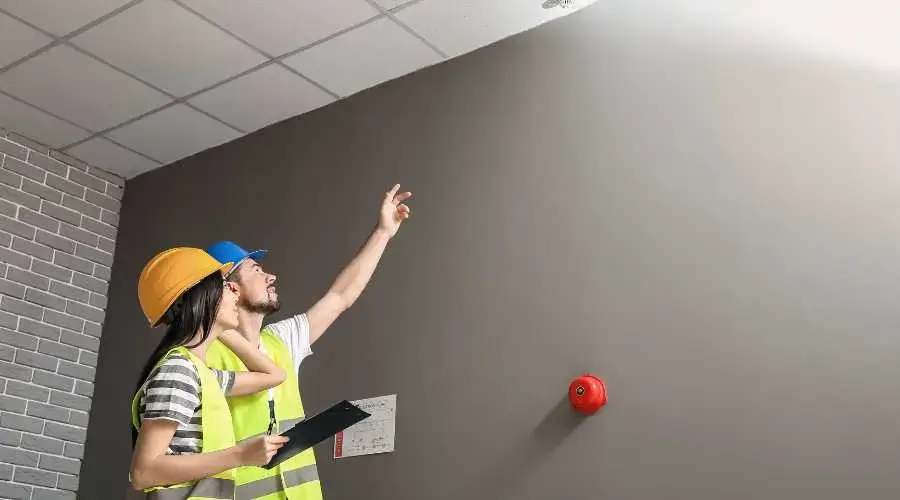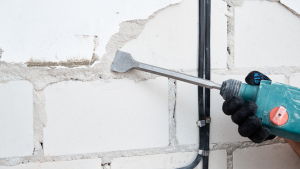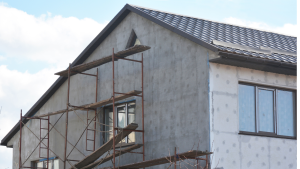In the United States, stucco is a popular home exterior material. Stucco can protect your home from various concerns, including water, pests, intense impacts, extreme hot and cold temperatures, and even fire.
However, how efficient is stucco in preserving your home and its residents from the ravages of fire? How does stucco compare to other commonly used materials for residential walls? And how fire resistant is a well-built stucco system?
This article will answer all your worries and more, giving you a detailed image of the protective features provided by stucco.
Fire Resistance of Stucco
Stucco is a highly fire-resistant construction material owing to the chemicals that make it up. These materials include Portland Cement, sand, limestone, water, and other additives are often used. These elements are neither flammable nor combustible. Hence stucco as a whole is not.
The manner stucco is put on walls also aids in fire prevention. It is typically put in three layers. These layers provide thickness and hence protection to the wall’s surface.
In addition to its fire-resistant properties, stucco may cover other fire-resistant construction materials. While stucco is typically used on stick-built (wood frame) houses, it may also overlay stone or brick. This is most often done when a stucco look is sought.
Comparison to Other Siding Materials
How does stucco compare to other common siding material alternatives regarding fire protection?
Stucco is much more fire-resistant than vinyl, wood, or fake wood. Vinyl melts quickly and efficiently when exposed to the high temperatures associated with fire. Vinyl may soften when exposed to direct sunlight on a hot day.
Meanwhile, wood and synthetic wood are very combustible and provide little fire protection.
While vinyl will not protect your home from fire, it will not help the fire spread. This cannot be said about wood siding.
Stucco has the most in common with Hardie fiber cement siding and stone and brick veneer. All of these forms of siding provide appropriate fire protection. Cracks are the primary vulnerability of these materials. The fire will be able to reach the wood within the wall more rapidly if the surface is damaged.
The most fire-resistant building materials include stone, brick, and metal. Stone and brick differ from their veneer counterparts in that they are full-thickness, and so provide substantially more protection.
Stucco Fire Rating
The standard thickness of a stucco application is one inch. At least three layers of stucco will be applied to the wall to attain this thickness. Here you can see the scratch, brown, and final coatings. While these three layers are the most popular, more are available, commonly used to guard against specific, documented environmental dangers in the region.
At one inch thick, stucco has a one-hour fire rating. This means that if the wall were exposed to flames, the fire would take an hour to breach the fence and damage the rest of your home.
Compared to the expected timeframe for modern and traditional dwellings, 1 hour is incredibly long to survive a fire. Fire may penetrate the walls of a modern house between in 3 to 5 minutes on average. Homes built 30 years ago had a lifetime of 15 to 17 minutes on average.
The stucco’s 1-hour fire rating is critical for two reasons. To begin with, it allows you and your family more time to evacuate the building in the event of a fire. Second, it indicates that your home will be secure until the fire department comes to extinguish the flames.
Protect Your Home From Fire
Stucco is a fantastic alternative for a fire-resistant exterior on your house. Stucco can withstand high temperatures and flame exposure without igniting as a fireproof material combination.
While vinyl siding is the most common and least expensive option, it offers much less protection than stucco. Stone and brick, however, provide the most protection while being the most expensive options. Like stone and brick veneers, Stucco falls in the middle, giving enough protection at a reasonable cost.
Stucco provides fire protection in the form of a 1-hour fire rating, which implies that it will take fire 1 hour on average to break through the wall. This is a far higher fire rating than most new homes.
Even with all of the fire protection that stucco provides, it’s important to remember that most home fires start on the inside. Stucco will not shield your home from fire. It can, however, defend it against fires outside your home.
CMB Jersey City Stucco & EIFS Repair
CMB Jersey City Stucco & EIFS Repair is your local stucco exterior installer. We have been in the stucco industry since 1985 and have earned a reputation for honest and dependable work. Contact us now for a free quotation on your next stucco job.




